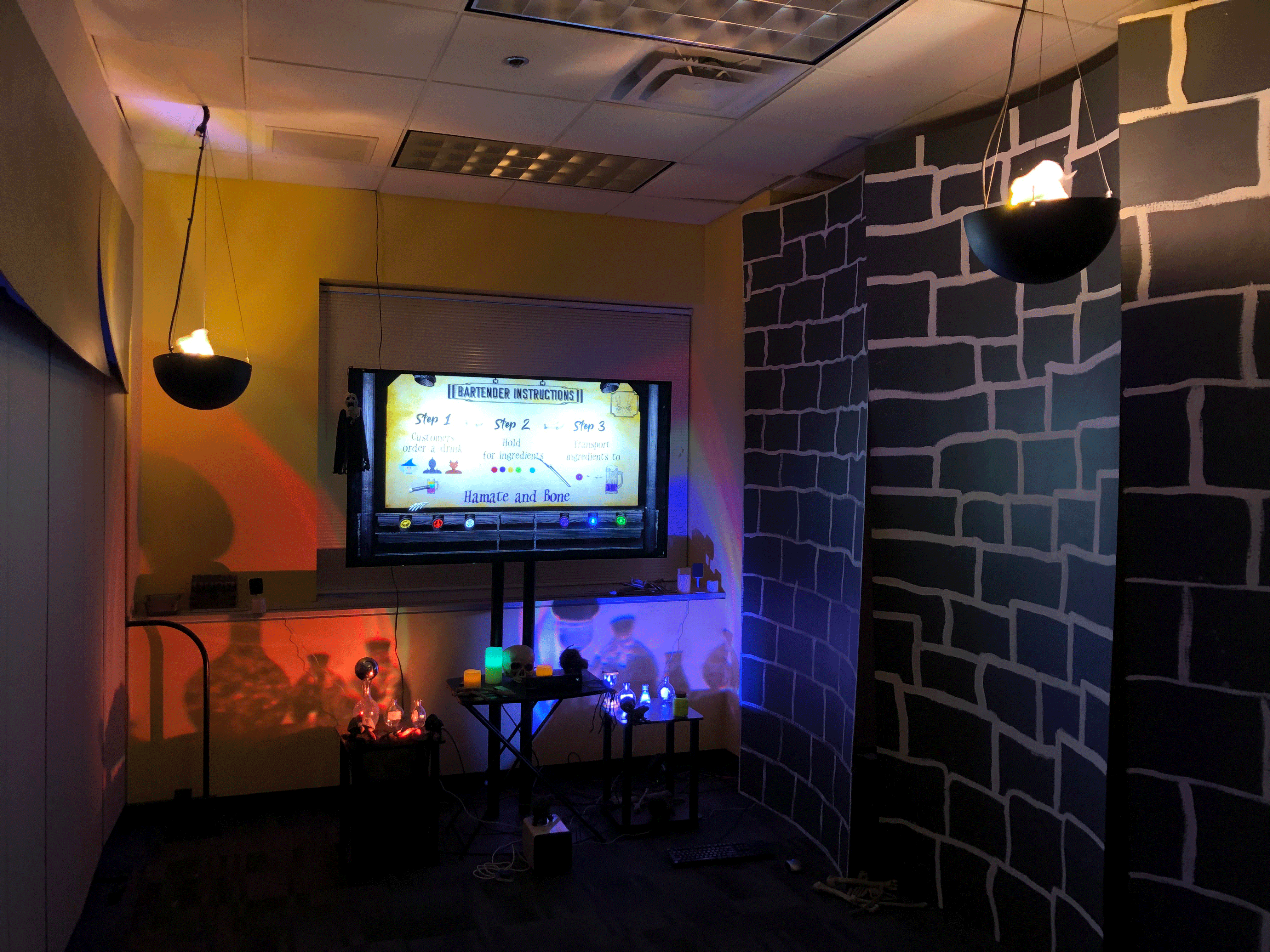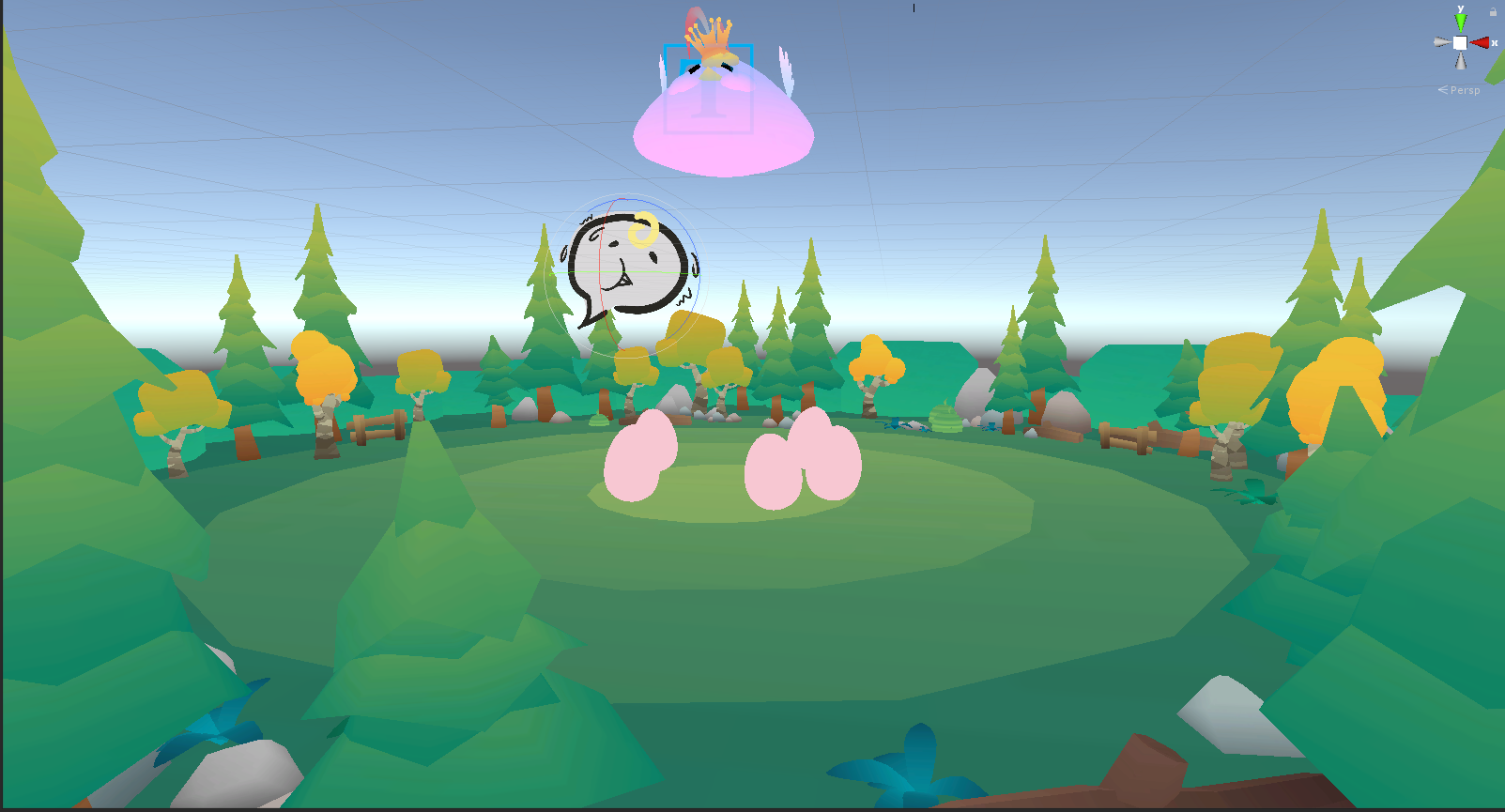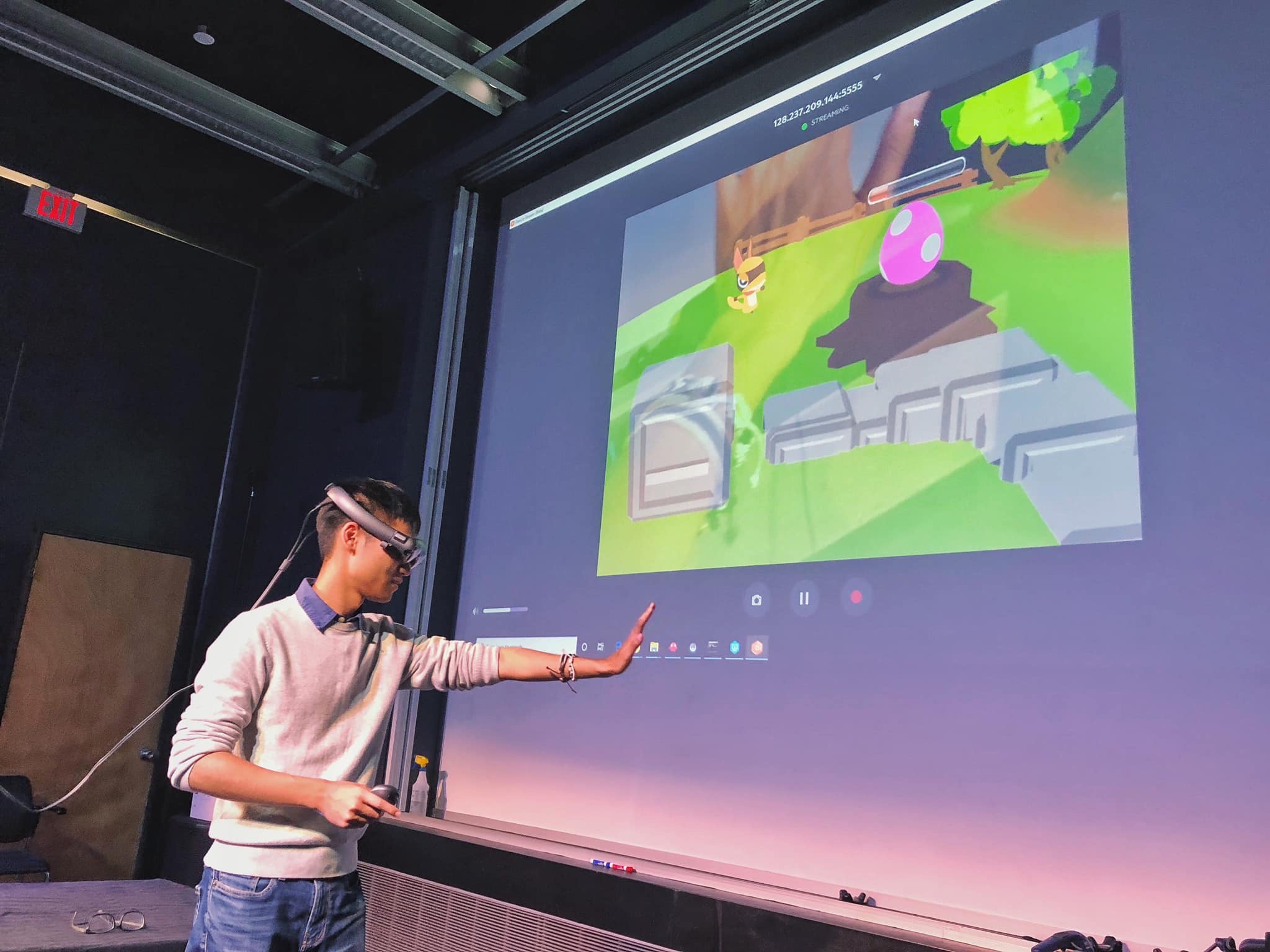Building Virtual Worlds (BVW) is a collection of games and interactive experiences created in two-week sprints with teams of five members, including programmers, artists, and sound designers.
Hamate & Bone | Platform: Unity + Kinect
Hamate & Bone is a two-player Kinect party game where two players collaborate to serve drinks in a witch bar using their arms. With each player having access to only half of the ingredient types, the two players have to communicate and pass around ingredients to each other in order to serve the correct drink to the correct customer.
The game is designed for the ETC Fall 2019 Festival and was accomplished in three weeks.
——————————————————————————-
Primary Roles: Gameplay Programmer
- Implemented the core gameplay mechanics using Kinect V2 sensor.
- Integrated 3D models, 2D UI images, and sound assets into the game.
- Conducted playtesting and smoothened Kinect body tracking based on feedback.
——————————————————————————-
Collaborated with:
- Cara Chen — 3D Artist, Environment Artist
- Lawrence Plofker — Game Designer, Sound Designer, Producer
- Isabel Yi — 2D Artist, UI Designer



Making of Hamate & Bone
Playtest and Iteration
Hamate & Bone is designed around the concept of “a multiplayer game with high replayability and steep learning curve”, which will best accommodate the huge number of naive guests and the guest flow. To meet that end, we have done multiple different iterations to ensure enough fun for both players as well as reducing frustration.
Our first iteration had an asymmetric gameplay where one player picks correct ingredients in correct orders according to what customers want while the other one “juggles” the combined drink to the customer with their hands. We soon realized the two main problems with this mechanic is that: 1) the “combing” action of Player 1 isn’t nearly as fun as the “juggling” action of Player 2 since the puzzle solving is too straightforward, and 2) there’s barely communication and collaboration between the two players.


To solve the problems that emerged from our first iteration, we soon prototyped the second iteration where both players both pick ingredients and juggle. In this iteration, both players will have to pick correct ingredients based on what customers’ want, juggle them to the center of the scene in the correct order to combine, and juggle the drink to the right customer. With this change to symmetric gameplay, both players will equally have fun and they’d have to communicate with each other regarding what ingredients come first and what come after.
A new problem that soon occurred with our second iteration was that the “fun” of the game falls heavily on the juggling part whereas the picking and combining ingredients is “flavorless” due to a lack of challenge and gets in the way of juggling since it adds on the frustration when you put the wrong ingredient in the pool. We then worked on our third iteration where we simplified the gameplay by having players directly pick ingredients and juggle them over to customers based on what they ordered. With this iteration we were able to reduce frustration without comprising on the challenge or collaboration.

Based on our third iteration, we later on went on polishing the gameplay around the mechanics. The process of polishing involved adding arms in addition to the hands so that it’s easier for players to pass around ingredients, smoothing the arm and hand movement, tweaking physics, etc.
Unearthed | Platform: Unity + Vive Headset and Tracker
Unearthed is a interactive VR experience where guests uncover story pieces via digging in a virtual desert using a prop shovel. This interactive experience is inspired by the prompt “the feeling of freedom” and is designed to target at naive guests (i.e. guests with nearly no experience with games, VR, and technology in general).
——————————————————————————-
Primary Roles: Gameplay Programmer, Producer
- Implemented the digging mechanic and cinematic transitions in the experience.
- Implemented various particle effects and the mirror effect.
——————————————————————————-
Collaborated with:
- Minz Cai — Lead Artist
- Derek Chan — Writer, 3D Artist
- Leo Lin — Sound Designer, Prop Designer
- Andrew McLamb — Platform and Gameplay Programmer


Fox-Off | Platform: Unity + Magic Leap
Fox-Off is a single-player AR game where guests build fences to project the Juju bird from foxes, their enemies. The game is inspired by the prompt “helping Character A who shows visible fear for Character B”.
——————————————————————————-
Primary Roles: Gameplay Programmer
- Implemented the core gameplay mechanics
- Helped design the concept and the gameplay mechanics.
——————————————————————————-
Collaborated with:
- Simon He — 3D Artist
- Annie Huang — 2D Artist
- Huixin Luo — Sound Designer, Producer
- Badri Mohan — Platform Programmer



Making of Fox-Off
Design with Magic Leap
After shortly introduced to Magic Leap, we kicked off our first iteration with a hand-based design. The main gameplay is that players will build fences on the round floor with their hands, so that they would be able to stop the foxes from reaching the Juju bird sitting at the center. With Magic Leap being able to track users’ hands, players will be able to interact with the virtual world by physically moving their hands around, which we deemed would increase the immersion.

This design, however, was soon compromised by the very limited field of view (FOV) with Magic Leap. Since the hand-based interaction requires players to walk close to the virtual round floor, the extremely small FOV of Magic Leap made it very difficult for players to see the entire picture of the world. This not only makes it hard to play but also breaks the immersion we are trying to build. Apart from that, players’ bodies will also go through the model in the virtual world while they try to interact with their hands, which also kicks them out of the fantasy.
Driven by those issues, we soon switched our hand-based interaction to a controller-based interaction which allows players to interact with the virtual world from a distance. By doing that we were able to ensure that enough parts of the world are seen through the limited FOV and that players would go through the models. This is the approach we kept in the final design.
*All games and experiences in this collection were created during the course of the Fall 2019 semester at the Entertainment Technology Center at Carnegie Mellon University.